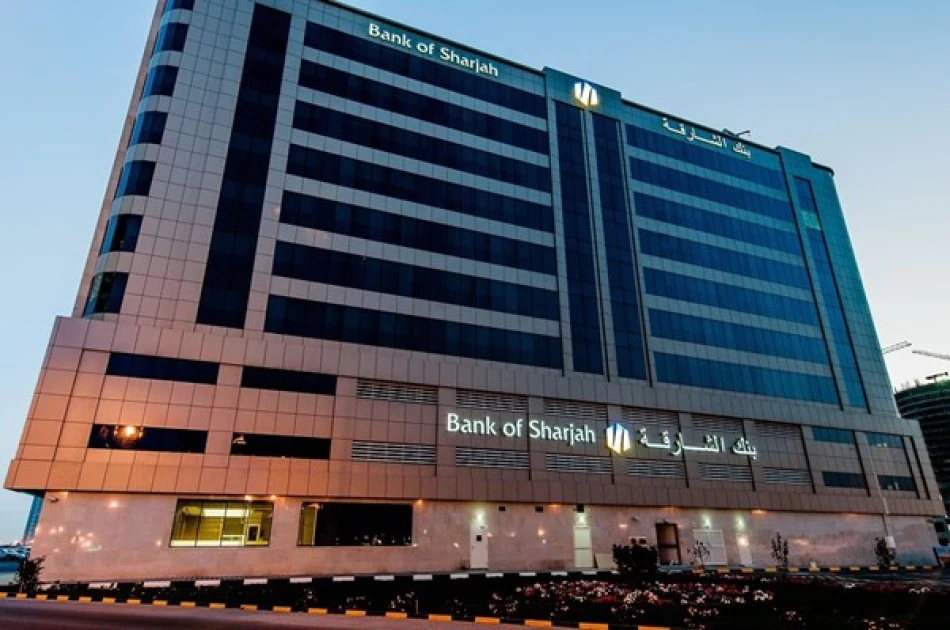
Sharjah Bank Sees 57% Surge in Net Profits During First Half
Bank of Sharjah Posts Record 57% Profit Surge as UAE Banking Sector Hits New Heights
Bank of Sharjah delivered a standout financial performance in the first half of 2025, recording record net profits of AED 268 million—a remarkable 57% year-on-year jump that underscores the resilience of UAE's regional banking sector. The surge reflects broader economic momentum in the Emirates and demonstrates how mid-tier banks are capitalizing on rising interest rates and expanding business volumes.
Strong Q2 Momentum Drives Half-Year Performance
The bank's impressive half-year results were bolstered by particularly strong second-quarter performance, with net profits reaching AED 152 million—a 31% increase from the first quarter's AED 116 million. This sequential growth pattern suggests the bank successfully navigated seasonal fluctuations while maintaining operational efficiency.
The profit acceleration comes at a time when UAE banks are benefiting from higher interest rate environments and increased lending activity. Net interest income soared 55%, while operating income grew by 51%, indicating robust demand for both traditional banking services and fee-based products.
Operational Efficiency Reaches New Benchmarks
Perhaps most impressive was Bank of Sharjah's cost discipline. The institution achieved a cost-to-income ratio of just 31%—a figure that puts it among the most efficient banks in the region. For comparison, many regional peers operate with ratios between 35-45%, making this performance particularly noteworthy for investors focused on operational leverage.
This efficiency gain reflects the bank's strategic transformation plan, which appears to be delivering measurable results across business lines. The combination of revenue growth and cost control created significant operating leverage—a key metric that institutional investors closely monitor.
Balance Sheet Strength Supports Growth Trajectory
The bank maintained a healthy loan-to-deposit ratio of 93%, striking an optimal balance between growth and liquidity management. More importantly, its capital adequacy ratio of 14% provides substantial buffer above regulatory requirements, while Tier 1 and Common Equity Tier 1 ratios both registered around 13%.
These metrics are particularly relevant as Basel III regulations continue to evolve and regional central banks maintain focus on banking sector stability. Bank of Sharjah's capital position suggests it can pursue growth opportunities without needing additional equity raises—a competitive advantage in the current environment.
Regional Banking Context and Market Implications
Bank of Sharjah's performance mirrors broader trends across the UAE banking sector, where institutions have benefited from economic diversification efforts and increased business activity. The 57% profit growth significantly outpaces the UAE's GDP growth, indicating the bank is gaining market share or improving operational efficiency faster than the overall economy.
This performance comes as the UAE continues positioning itself as a global financial hub, competing directly with Singapore and Hong Kong for regional banking business. Mid-tier banks like Bank of Sharjah are well-positioned to capture overflow business from the larger institutions while maintaining more personalized service offerings.
Strategic Transformation Delivers Measurable Results
CEO Mohamed Khediri emphasized that the bank's strategic transformation plan is showing "notable progress," with improvements across multiple business lines. The focus on sustainable and profitable growth through efficient capital deployment appears to be working, as evidenced by the strong return metrics.
Chairman Sheikh Mohammed bin Saud Al Qasimi highlighted the bank's "cautious approach to risk management" and commitment to conservative lending policies—a strategy that has historically served UAE banks well during economic cycles.
Investor Outlook and Growth Sustainability
For equity investors, Bank of Sharjah's results suggest the institution has successfully positioned itself for continued growth. The combination of strong capital ratios, efficient operations, and diversified revenue streams creates multiple pathways for sustained profitability.
The 57% profit surge, while impressive, raises questions about sustainability at such growth rates. However, the underlying fundamentals—particularly the cost efficiency improvements and capital strength—suggest the bank has built a foundation for more moderate but consistent growth going forward.
As the UAE economy continues diversifying away from oil dependence, regional banks like Bank of Sharjah are likely to play increasingly important roles in financing new sectors and supporting the country's long-term economic transformation.
 Layla Al Mansoori
Layla Al Mansoori







